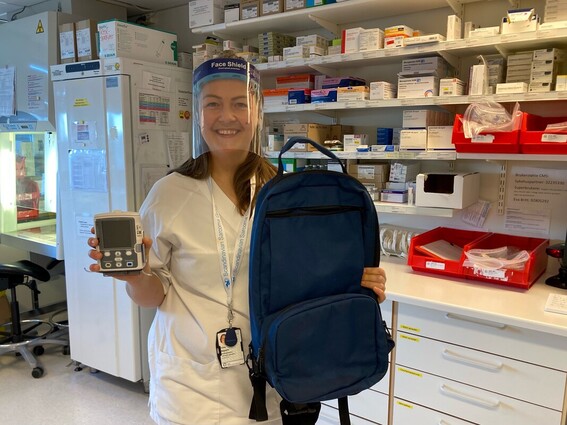|
In an era where the personalization of healthcare is increasingly recognized for its impact on treatment outcomes, the move towards home chemotherapy for adolescents and young adults (AYA) with osteosarcoma represents a transformative approach. At the heart of this shift is a focus on patient-centered care, acknowledging the unique challenges faced by AYA patients during their cancer journey. By integrating the experiences from Oslo University Hospital's home chemotherapy program and narratives from patients, this blog post delves into the benefits of administering chemotherapy in the comfort and familiarity of one's home, underscoring a significant leap forward in pediatric oncology.
Understanding the Benefits Through Patient Feedback Physical Comfort and Well-being: Patients report a notable improvement in their physical comfort, with many highlighting better sleep and reduced nausea. The convenience of a portable "Cadd Solis" infusion pump over traditional in-hospital setups cannot be overstated, as one patient eloquently puts it: "It is a lot easier to carry the backpack than walking with the stand." Autonomy and Normalcy: The ability to undergo treatment at home has had a profound impact on patients' sense of autonomy and normalcy. "I feel more freedom," expresses a patient, reflecting a sentiment echoed by many. This flexibility allows patients to maintain their daily routines to a great extent, including attending school, spending time with friends, and being with their families. Reduced Hospital Stays: A significant advantage of home chemotherapy is the reduced need for prolonged hospital stays, which, for many patients, translates into less time spent in an environment that often exacerbates their stress and anxiety. "I don’t have to be at the hospital as much as I did before," shares a participant, highlighting the psychological relief that comes with home treatment. Quality of Life: The overarching theme from patient feedback is a marked improvement in quality of life. Home chemotherapy enables patients to eat the food they prefer, engage in physical activities, and enjoy the company of loved ones, all of which contribute to a positive outlook during treatment. "I can stay at home eating the food I want," a patient joyfully remarks, encapsulating the essence of the home chemotherapy experience. The Impact of Home Chemotherapy The collective feedback from AYA patients participating in home chemotherapy programs illustrates a clear preference for this innovative treatment approach. Beyond the logistical and physical benefits, the emotional and psychological advantages are significant. Patients feel more in control of their lives, less defined by their illness, and more connected to their sense of self and community. Conclusion: A New Paradigm in Cancer Care The transition to home chemotherapy for young osteosarcoma patients embodies the future of cancer care — one that prioritizes the patient's overall well-being alongside clinical efficacy. The feedback from those who have experienced this model firsthand serves as a powerful endorsement of its value, offering insights into how healthcare providers can further refine and expand such programs. As we continue to navigate the complexities of cancer treatment, the move towards more personalized, patient-centric care models like home chemotherapy offers a beacon of hope and a pathway to not just surviving, but thriving. Acknowledgments This exploration into the benefits of home chemotherapy for AYA patients with osteosarcoma is made possible by the pioneering work of the Department of Oncology at Oslo University Hospital, the bravery and openness of patients and their families, and the dedication of healthcare professionals committed to improving the lives of young cancer patients. Their collective efforts are reshaping the landscape of pediatric oncology, making a profound difference in the lives of those they touch. A special thanks goes out to oncology nurses Hilde Bøgseth, Ingunn H. Sandven, and Gudveig Storhaug , and Dr. Ivar Hompland Head of Sarcom Oncology at Oslo University Hospital in Norway. Source article, in Norwegian, can be found here. |


